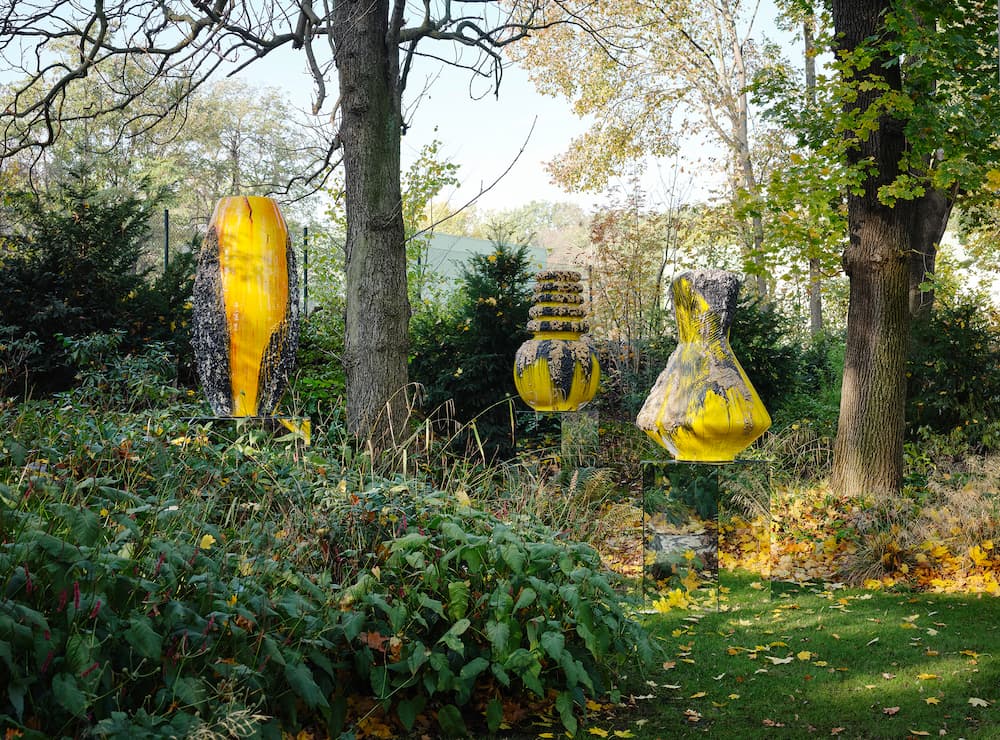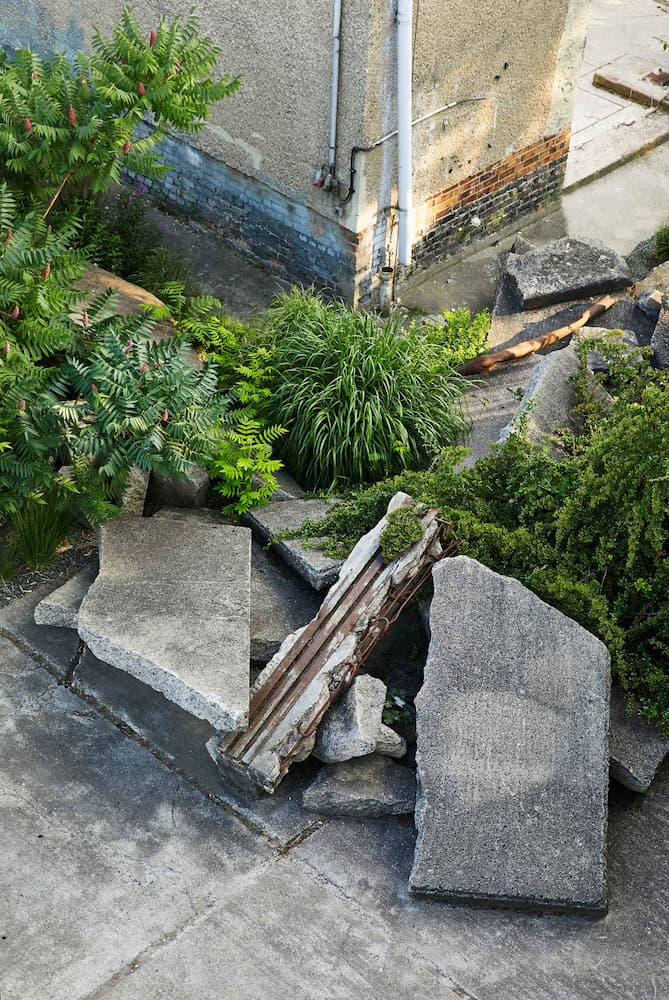The Ruin Garden
An architect and her artist partner have turned a decrepit former shipyard in Berlin into a garden as unique as it is picturesque.
The atmospheric Ruin Garden, which rises from the remains of a dilapidated warehouse in East Berlin, was created through a process of ‘curated decay.’ A collaboration between architect Tanja Lincke and her partner, artist Anselm Reyle, the garden honours the site’s history while making something new.
The couple bought the two-acre former shipyard from the Berlin state in 2008. Once occupied by the East German harbour police, this unloved industrial site on the banks of the Spree River in Treptow-Köpenick had been more or less abandoned since the overnight collapse of East Germany in 1989.
Formerly used for boat repairs, the crumbling warehouse sat in the middle of the site. Accelerating its collapse and transforming it into a walled garden was a bold yet logical solution to introduce light and link the family home, designed by Tanja, with the renovated police buildings that now house the couple’s side-by-side studios.
“We didn’t need such a huge volume in the centre of the block, but we wanted to preserve it in some way, to shape something new out of the existing building rather than replacing it completely,” says Tanja.
The follies and overgrown ruins of romantic English gardens were the inspiration behind the design. Although the building’s decomposition appears artless, it involved a considered process of working out exactly what to keep and what to take away. Tanja modelled the design before Anselm climbed up a huge ladder and outlined the desired form of the ‘ruin’ onto the walls with a paintbrush. Demolition workers then removed the roof, much of the concrete flooring and parts of the walls, following his line to the brick.
What remains is a garden defined by walls instead of fences or hedges, generous enough for summer barbecues, a game of football, and even the family’s caravan. It provides shelter and traps warmth on cooler days, yet feels open and light all year- round. An oversized ‘doorway’ frames a view of the Spree, while a pile of concrete shards left over from the warehouse floor has been transformed into a riverside sculpture, recreating Das Eismeer, or The Sea of Ice, a painting by the nineteenth-century German landscape artist, Caspar David Friedrich.
Like many a gardener before them, the couple started off by growing everything they liked the look of. A few years later, they pared the planting back to fewer varieties in repeating patterns, choosing the most beautiful colours and textures for each of Berlin’s distinct seasons, along with local natives. A gardener now visits regularly to maintain the balance and keep the self-seeding plants in check.
“We wanted to include plants that are the first to take over these abandoned areas,” says Tanja. “So we have birch and staghorn sumac trees, and masses of tall grasses.”
In winter, the white-trunked birches, twisting sumac branches and red rosehips cast a gothic spell, dramatised by the white walls and grey skies. Spring brings masses of pale cream narcissus and phlox, followed by the dark green shade of summer, with tall grasses and pink echinacea flowers thriving in the sheltered warmth. Come September, brilliant autumn colours take hold, with yellow birch and red sumac leaves, orange rowan berries and feathery golden grasses. And all year-round, the precisely cut geometry of the lawn provides a counterpoint to the wild plant life and roughness of the ruin.
“In Berlin there are not many lost places left, as nature gradually takes over or new buildings replace them,” says Tanja. “For us, it was important to leave something of the site’s history and preserve the building’s industrial elements, even as we gave it a new dimension.”











